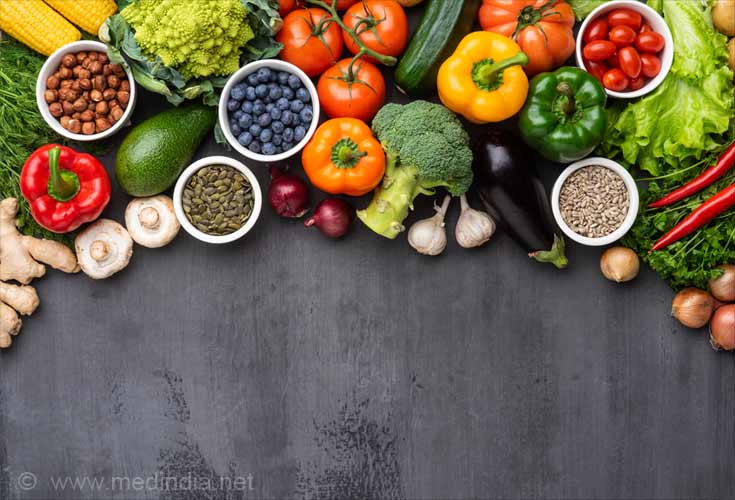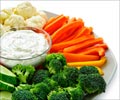About
"Every living cell in your body is made from the food you eat. If you consistently eat junk food then you’ll have a junk body." - Jeanette Jenkins
Food with its combination of flavor, aroma and color is one of life’s biggest pleasures. Pills can never be a substitute for a bowl of hot soup or a cup of hot tea. Right from buying fresh ingredients, to washing and cooking those and then eating together with the family, it takes up major portion of the time in our life.
A balanced diet is the cornerstone of good health. With diabetes, obesity, heart ailments rapidly emerging as a major health challenge, we really need to look into our lifestyles, especially where our diets are concerned.

According to the National Diet and Nutrition Surveys in the UK, on an average, too much sugar and salt is being consumed, only three portions of the recommended five daily portions of
On top of that, reveal various surveys, majority of the population worldwide are barely exercising.
Nutrient deficiencies, such as magnesium iron, calcium, vitamin D, B12, omega 3 fatty acids, and antioxidants deficiencies, are common and unfortunately undetected.
Making small changes in the lifestyle can be a boon for disease prevention and wellness. Below are a few easy to follow principles that will help making those changes.
A Balanced Meal Intake
A meal is said to be balanced when it contains a variety of foods in moderate amounts. A balanced meal should include -
- Whole grain cereals for energy and B vitamins.
- Low fat proteins for strength, bone health and fat loss.
- Fruits, vegetables, and nuts for immunity build up and healthy digestion.
Adjustments in meals and snacks should be made in order to include the missing foods from the above three major food groups. For example, a breakfast of cereals would benefit from the addition of a fruit and yoghurt (protein) to balance the meal. Or, a bowl of pasta (carbs) could incorporate some tuna or beans (protein) in the sauce and a large side salad of vegetables(vitamins and minerals) to be called a balanced meal.
Consuming Sufficient Fruits and Veggies
According to nutrition guidelines, we must eat at least five portions of fruits and vegetables daily. In reality, most of us barely end up eating just one or two portions in a day. A total of five portions comes to around 400 grams. It is easiest to picture each portion as roughly the amount that can be held in the palm of the hand. A portion of it can easily be incorporated in each of the three daily meals and the rest can be eaten as a snack. For example, have a glass of fruit juice with breakfast or put chopped fruits on cereals to make it wholesome and filling or chew on a few carrot sticks mid afternoon.
Eating Nutrient Dense Foods
The quality of food we eat is of utmost importance. Eat food as close to its natural state as possible to benefit nutritionally. This means eating whole grains instead of refined grains, eating natural sources of sweetness such as bananas and dried fruit instead of too much refined sugar and eating naturally fatty foods such as avocados, nuts and oily fish instead of commercially prepared fatty foods. Nutrient dense foods are more satisfying and healthy.
Foods which are sugary or heavily refined such as highly sweetened breakfast cereals, processed white breads, white flour foods and many fast and convenience foods increase the intake of sugar, salt, saturated and trans fats beyond the recommended guidelines. Such foods in turn are just empty calories and increase the risk of poor nutritional status and susceptibility to lifestyle related disorders.
Healthy Snacking
Snacks, drinks and take-aways are often the pitfall in a healthy eating regime. The trick is to make these snacks healthy. Instead of choosing high sugar, high salt and high fat snacks or high sugar or heavily caffeinated drinks, one needs to opt for better options that can keep one within the healthy eating guidelines.
Examples -
- A handful of nuts with dried fruits
- A fruit
- Yoghurt
- Vegetable sticks with a dip
- Vegetable sandwich
- A piece of Cheese
- Open cheese toast
- Oat pancakes
- Cereals with milk
- Drinks
- Ice tea, vegetable juice, lime juice, buttermilk, smoothie, milkshake
Regularity in Meal Consumption
Regular mealtimes help one select the right foods for every meal. Scheduling meal times also ensures the fact that meals are not missed. Missing meals means missed nutrients; and often these nutrients cannot be replaced in subsequent meals. Regular mealtime keeps blood sugars under control, ensures high metabolic rate, and inhibits fat deposition. It makes one stay away from temptations and mindless eating.
Balance and Moderation is the Key
An excess of anything is unhealthy. You just need to get enough but not too much of each type of nutrient. With just decent portion size of any food, there is no need to eliminate any favorite food totally. Moderate amounts of all foods can help ensure that energy intake is controlled and that excessive amounts of any one food or food component are not eaten.
Sufficient Fluid Consumption
One must drink around 8 to 10 glasses of water or more if needed each day. This keeps the body hydrated and assists it to function optimally. In hot weather and at times of increased activity, water requirement by the body also increases. Alternative liquids like fresh juices, coconut water, buttermilk, and milk can also be consumed to keep the body hydrated.
Keeping an Eye on Body Fat and Waist Circumference
Being within the recommended fat levels is the most important aspect of healthy living. It is the fat in the body that decides your health status rather than the body weight per se.
Including low caloric nutrient dense foods and indulging in some form of exercise daily proves to be a boon to fitness and wellbeing.
Waist circumference greater than 90 cm in men or greater than 80 cm in women is considered to be centrally obese. Men whose body fat is 25 percent or more of their total weight and women whose body fat is 32 percent or more of their total weight are considered obese. The body fat can be estimated on the body fat analyzer (Tanita body composition analyser machine) available at various health centers and clinics.
Yearly Health Checkups
Yearly health check ups can be the most empowering action towards health.
The ABCs of health check ups keeps one updated with the metabolic status of the body. Actions then could be taken at the earliest depending on the test results.
A is for A1C: The A1C blood test shows the average blood glucose levels for the past two to three months.
B is for blood pressure: Blood pressure indicates cardiovascular health and controlling it minimizes the risk of heart problems, kidney disease, stroke and other problems.
C is for cholesterol: It’s important to be aware of the LDL, HDL cholesterol and triglycerides.
In addition to the A1C test, blood pressure readings and an annual cholesterol panel, an eye, mouth, teeth check up, liver enzyme tests, thyroid testing, vitamin D screening and kidney check ups done annually could be of additional benefit from the prevention point of view.












